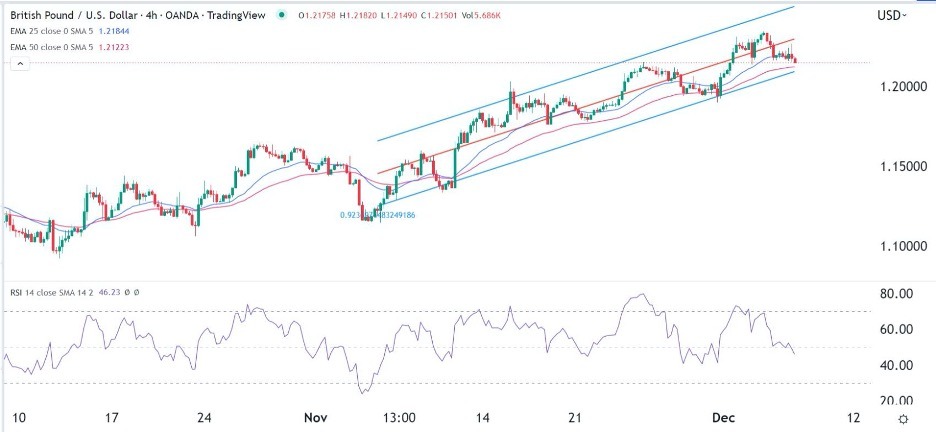Bearish view
- Sell the GBP/USD pair and set a take-profit at 1.200.
- Add a stop-loss at 1.2280.
- Timeline: 1-2 days.
Bullish view
- Set a buy-stop at 1.2235 and a take-profit at 1.2325.
- Add a stop-loss at 1.2150.
The GBP/USD price retreated as the US dollar index rallied and as America’s Treasury yields continued their downward trend. It dropped to 1.2163, slightly lower than this week’s high of 1.2350. It has jumped by almost 10% above its lowest level in November.
US and UK bond yields retreat
The GBP/USD price declined slightly as UK bond yields dropped. Data shows that the 10-year bund is yielding at 3.10% while the 2-year’s yield is at 3.2%. Elsewhere, in the United States, the 10-year and 5-year yields were trading at 3.5% and 3.7%.
The yield curve inversion continued as the spread between the 10- and 2- year yield dropped to the lowest level in decades. An inverted curve is usually the best predictor of a recession in the US. For example, it inverted a few months below the 2020 recession and the 2008/9 financial crisis.
The main reason why the GBP/USD price has declined this week is the strong economic numbers published by the US this month ad their implication. According to the Bureau of Labor Statistics (BLS), the economy added 282k jobs in November while the unemployment rate held steady at a multi-decade low of 3.7%.
Therefore, analysts expect that the Fed will maintain interest rates high for a longer period. In a report on Monday, the WSJ said that the Fed will likely push interest rates above the important psychological level of 5%.
This explains why the US dollar index has jumped while stocks have lost their momentum. The US dollar index rose to $105.45 while the Dow Jones and the S&P 500 indices dropped by more than 1.5% on Tuesday.
Meanwhile, construction data from the UK showed that construction growth crashed to the lowest level in three months as mortgage rates remained at an elevated level.
GBP/USD forecast
The GBP/USD price has been in a steady bullish trend in the past few weeks. This recovery saw it rise to a multi-month high of 1.2340 last week. Now, it has pulled back slightly as the US dollar makes a comeback. It has dropped below the middle line of the ascending regression channel.
At the same time, the Relative Strength Index (RSI) has continued to tilt downwards. The pair has also managed to move below the 25-day moving average. Therefore, the pair’s sell-off has a small room to run, which will see it retest the support a 1.2000.

Ready to trade our free trading signals? We’ve made a list of the best Forex brokers worth trading with.
